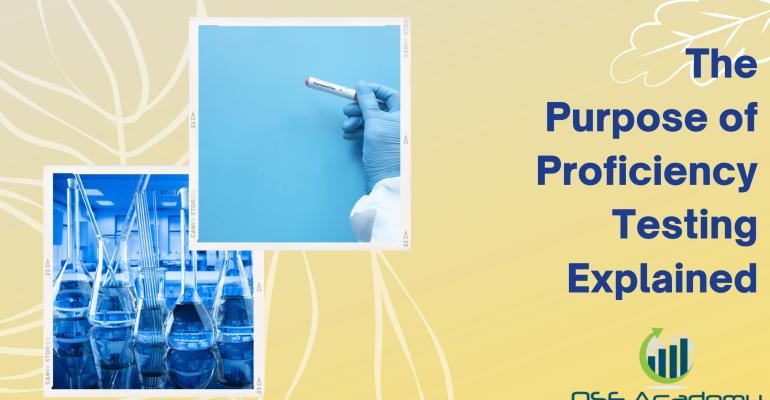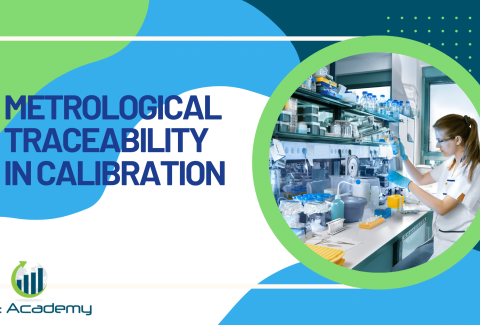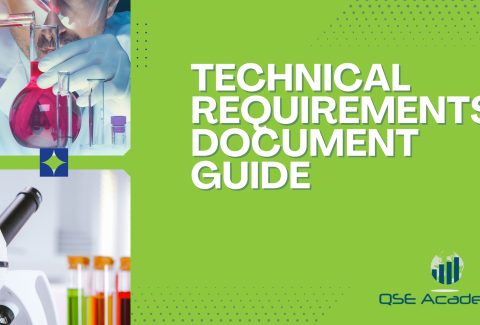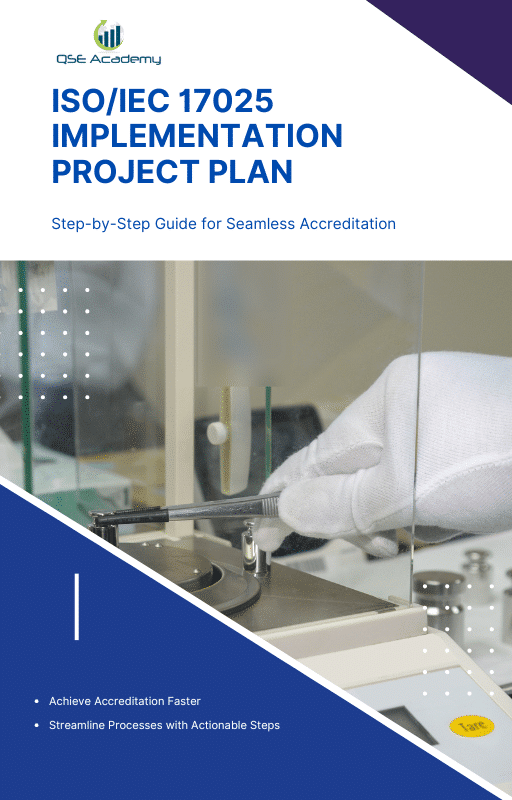The Purpose of Proficiency Testing Explained
The Purpose of Proficiency Testing Explained
Have you ever wondered how laboratories, testing facilities, and even medical diagnostic centers ensure their results are accurate and reliable? The answer lies in proficiency testing—a powerful quality assurance tool that helps organizations confirm their testing methods are producing correct and consistent results. But what exactly is the purpose of proficiency testing, and why is it so important?
Simply put, the purpose of proficiency testing is to verify that a laboratory or testing facility can produce accurate results when analyzing unknown samples. It acts as an external check, allowing organizations to compare their performance with industry standards, detect any inconsistencies, and make improvements where necessary. Without proficiency testing, errors could go unnoticed, leading to unreliable test results that could impact public health, product quality, and even legal decisions.
Think about it this way: If a hospital laboratory is running blood tests, doctors and patients need to be confident that the results are correct. Or, if a food safety lab is testing for contaminants, the findings must be precise to ensure consumer safety. That’s why the purpose of proficiency testing extends beyond laboratories—it builds trust, maintains high-quality standards, and ensures compliance with regulatory requirements.
In this article, we’ll explore the purpose of proficiency testing in detail, breaking down how it works, why it matters, and how organizations can implement it effectively. Whether you work in a laboratory or are just curious about how testing accuracy is maintained, this guide will help you understand why proficiency testing is essential for reliable and trustworthy results. Let’s dive in!
What is Proficiency Testing?
Before we dive deeper into the purpose of proficiency testing, let’s first understand what it actually is. At its core, proficiency testing (PT) is a way to evaluate the accuracy and reliability of testing laboratories. It’s like a quality check that ensures a lab’s results are correct and consistent over time.
Imagine you’re baking a cake, and you want to be sure you’re following the recipe correctly. You might compare your cake to someone else’s who used the same ingredients and steps. If your cake turns out too dry or too sweet compared to theirs, you’d know something went wrong in your process. Proficiency testing works in a similar way—except instead of cakes, laboratories are testing unknown samples and comparing their results with others to see if they’re on track.
How Proficiency Testing Works
The process of proficiency testing is simple but effective. Here’s a step-by-step breakdown of how it typically works:
✅ Step 1: A Testing Provider Distributes Unknown Samples
- An independent proficiency testing provider sends out test samples to different laboratories. These samples are pre-analyzed but come with no result attached, meaning the lab must analyze them as they would with any normal sample.
✅ Step 2: Laboratories Perform the Required Tests
- Each lab tests the sample using their usual methods and equipment. They treat it as if it were a real-world case, ensuring that their everyday process is being evaluated.
✅ Step 3: Results Are Submitted for Evaluation
- After testing, the lab submits its results to the proficiency testing provider for comparison against expected values or industry benchmarks.
✅ Step 4: Performance is Assessed and Feedback is Given
- The proficiency testing provider compares the submitted results with the correct values and those of other participating labs. If a lab’s results are significantly different, they receive feedback on potential errors or inconsistencies.
✅ Step 5: Corrective Actions (If Needed) Are Taken
- If a laboratory’s results fall outside the acceptable range, they must investigate and correct the issue. This could involve recalibrating equipment, retraining staff, or adjusting procedures.
Industries That Rely on Proficiency Testing
The purpose of proficiency testing isn’t limited to just one field—it’s widely used across multiple industries where accuracy is critical. Here are some of the key sectors that depend on proficiency testing:
🔬 Medical & Clinical Laboratories – Ensuring that blood tests, diagnostic screenings, and other medical analyses produce reliable results.
🌍 Environmental Testing Labs – Verifying the accuracy of tests for water quality, air pollution, and soil contamination.
🥗 Food & Beverage Industry – Confirming that laboratories accurately detect contaminants, allergens, and nutritional values in food products.
🔬 Pharmaceutical Testing – Making sure that drug formulations meet strict safety and potency standards.
⚖️ Forensic Science & Criminal Investigations – Ensuring that DNA analysis, toxicology reports, and other forensic tests are precise and admissible in court.
🏭 Manufacturing & Quality Control – Checking the composition, durability, and safety of materials used in everything from construction to electronics.
💡 No matter the industry, the purpose of proficiency testing remains the same: to confirm that test results are accurate, consistent, and trustworthy.
Why Proficiency Testing is More Than Just a Requirement
For many industries, proficiency testing is required by regulatory bodies to ensure compliance with standards like ISO 17025 (for testing and calibration labs) or ISO 15189 (for medical labs). However, the purpose of proficiency testing goes beyond just meeting regulations—it’s about continuous improvement.
By regularly participating in proficiency testing, organizations don’t just “pass” or “fail”—they gain insights into their processes, improve their accuracy, and build confidence in their results.
Now that we understand what proficiency testing is and how it works, let’s explore the deeper reasons behind why it’s so important. In the next section, we’ll break down the purpose of proficiency testing and why it plays a crucial role in ensuring high-quality standards across different industries.
The Purpose of Proficiency Testing
Now that we understand what proficiency testing is and how it works, let’s dive into the real question—why is it so important? The purpose of proficiency testing goes beyond just checking if a laboratory or testing facility is doing a good job. It ensures accuracy, reliability, and trust in the results that impact everything from healthcare diagnoses to food safety and environmental monitoring.
Think about it this way: If two different laboratories tested the same water sample for contamination, but one lab reported safe levels while the other detected hazardous chemicals, which result would you trust? This is where proficiency testing comes in—it acts as a safeguard to make sure testing facilities produce consistent and correct results.
Let’s break down the purpose of proficiency testing and why it’s a crucial part of quality assurance.
1. Ensuring Accuracy and Reliability
One of the most important purposes of proficiency testing is to verify that laboratories and testing facilities are producing accurate results. Even small measurement errors can have big consequences, especially in fields like healthcare, pharmaceuticals, and environmental testing.
✅ Proficiency testing helps detect errors before they become major issues.
✅ It ensures that testing methods produce reliable, repeatable results.
✅ It helps laboratories identify weaknesses and improve processes.
💡 Imagine a doctor diagnosing a patient based on inaccurate lab results. Proficiency testing helps prevent misdiagnoses by ensuring medical tests are as precise as possible!
2. Meeting Regulatory and Accreditation Requirements
In many industries, proficiency testing isn’t optional—it’s required by law or industry standards. Regulatory bodies like ISO, FDA, and EPA mandate proficiency testing to ensure laboratories meet high-quality standards.
✅ ISO 17025 (for testing and calibration labs) and ISO 15189 (for medical labs) require regular proficiency testing to maintain accreditation.
✅ Environmental regulations mandate proficiency testing for labs that monitor pollution and public health.
✅ Food safety laws require laboratories to prove their accuracy in detecting contaminants.
💡 Think of proficiency testing as a driver’s test—just because you have a license doesn’t mean you never have to prove your skills again. Regular testing keeps standards high and ensures ongoing compliance.
3. Identifying and Correcting Errors
No testing process is perfect, and even the most well-equipped laboratories can experience errors. The purpose of proficiency testing is to catch these mistakes early and provide a way to correct them before they impact real-world results.
✅ It helps detect systematic errors (consistent mistakes due to faulty equipment or methods).
✅ It highlights random errors (occasional mistakes that happen due to variations in testing conditions).
✅ It gives laboratories the opportunity to fix issues before they affect critical decisions.
💡 Think of it like proofreading an important document before submitting it—you want to catch and fix any typos before it’s too late!
4. Benchmarking Against Industry Standards
Another key purpose of proficiency testing is to help laboratories compare their performance to industry standards and peer organizations. This allows them to see how well they measure up and where they can improve.
✅ It provides a benchmark to ensure test results align with industry expectations.
✅ It allows organizations to compare their accuracy with other accredited laboratories.
✅ It drives continuous improvement and innovation in testing methods.
💡 It’s like competing in a sports league—you don’t just want to play, you want to see how you compare to others and work toward getting better!
5. Building Customer and Stakeholder Confidence
At the end of the day, the purpose of proficiency testing isn’t just about the labs—it’s about the people and industries that rely on their results. Whether it’s doctors, regulatory agencies, manufacturers, or the general public, confidence in test results is crucial.
✅ Proficiency testing reassures clients and regulators that results are trustworthy.
✅ It proves that laboratories take quality control seriously.
✅ It helps organizations maintain their reputation and credibility.
💡 Imagine you’re buying a car—would you trust a safety rating from a company that never tested its vehicles? The same principle applies to laboratories that undergo proficiency testing!
Final Thoughts: The Essential Role of Proficiency Testing
The purpose of proficiency testing is clear—it ensures accuracy, maintains compliance, identifies errors, sets industry benchmarks, and builds trust. Whether in healthcare, food safety, environmental monitoring, or manufacturing, proficiency testing plays a vital role in making sure test results are reliable and meaningful.
By participating in proficiency testing, laboratories and organizations don’t just prove their competence—they demonstrate a commitment to continuous improvement and quality assurance.
Now that we’ve explored why proficiency testing is so important, let’s move on to how organizations can implement it effectively to maintain high-quality testing standards!
How to Implement Proficiency Testing Effectively
Now that we understand the purpose of proficiency testing and why it’s so important, let’s talk about how organizations can implement it effectively. Simply participating in proficiency testing isn’t enough—it needs to be done strategically to ensure the best results and continuous improvement.
Think of it like going to the gym. Just signing up for a membership won’t get you in shape—you need a structured plan, regular workouts, and a way to track progress. In the same way, proficiency testing should be an ongoing, well-organized process that helps laboratories and testing facilities improve their accuracy and reliability over time.
Let’s go through the key steps to implementing proficiency testing effectively.
1. Choosing the Right Proficiency Testing Provider
The first step in implementing proficiency testing is selecting a reputable provider. Not all proficiency testing programs are the same, so it’s important to choose one that aligns with your industry’s standards and requirements.
✅ Look for accredited providers – Choose a proficiency testing provider that follows ISO 17043 (the standard for PT providers).
✅ Make sure the testing program matches your needs – Select a provider that offers proficiency testing in your specific field, whether it’s medical diagnostics, environmental testing, or food safety.
✅ Check for clear reporting and feedback – A good PT provider should give detailed performance reports that help identify areas for improvement.
💡 Think of it like picking a school for professional training—you want a program that’s accredited, relevant, and provides useful feedback to help you grow!
2. Establishing a Regular Proficiency Testing Schedule
The purpose of proficiency testing is to provide continuous quality assurance, so it’s not something that should be done just once and forgotten. Organizations should participate in proficiency testing regularly to ensure ongoing accuracy.
✅ Determine testing frequency – Some industries require proficiency testing quarterly, while others may conduct it annually.
✅ Integrate PT into the quality assurance plan – Treat proficiency testing as an essential part of routine lab operations, not just a compliance requirement.
✅ Rotate staff participation – Ensure that different team members take part in PT exercises to assess consistency across personnel.
💡 Think of it like an athlete training for a competition—regular practice ensures peak performance when it really matters!
3. Understanding and Analyzing Proficiency Testing Reports
Once a laboratory completes proficiency testing, they receive a report evaluating their performance. But what happens next? Understanding and analyzing the results is key to making improvements.
✅ Compare your results with industry benchmarks – A lab’s performance should align with established standards and peer laboratories.
✅ Identify any discrepancies – If test results differ significantly from expected values, the lab must investigate possible causes.
✅ Use root cause analysis – If errors occur, find out whether they stem from instrument calibration, procedural mistakes, or environmental factors.
✅ Document corrective actions – Keep a record of any steps taken to resolve issues so that future proficiency testing results improve.
💡 Imagine taking a test in school—you don’t just want to know your score, you want to review mistakes and improve for next time!
4. Integrating Proficiency Testing with Internal Quality Control
The purpose of proficiency testing isn’t just to pass a test—it’s to improve overall quality. That’s why successful organizations integrate PT results into their internal quality control processes.
✅ Compare PT results with routine test results – If a lab’s everyday testing produces different results from proficiency testing, it may indicate inconsistencies in methods.
✅ Use PT as a training tool – Laboratories can use proficiency testing exercises to reinforce best practices and improve staff competency.
✅ Make adjustments where needed – Whether it’s refining standard operating procedures (SOPs) or upgrading equipment, proficiency testing provides valuable insights for improvement.
💡 Think of it like a chef perfecting a recipe—small adjustments in technique can make a big difference in consistency and quality!
5. Taking Corrective Actions When Necessary
If a laboratory receives unsatisfactory proficiency testing results, it’s crucial to take corrective actions immediately. The purpose of proficiency testing is to identify weaknesses before they become major issues, so addressing them promptly is key.
✅ Recalibrate equipment – If results are inaccurate due to faulty instruments, recalibration is necessary.
✅ Retrain staff if needed – If errors stem from procedural mistakes, additional training may be required.
✅ Revise protocols – If a lab’s testing method consistently produces outlier results, standard procedures should be reviewed and updated.
💡 Making mistakes isn’t the problem—failing to correct them is. Proficiency testing helps labs catch and fix issues before they impact real-world results!
Final Thoughts: Maximizing the Benefits of Proficiency Testing
The purpose of proficiency testing isn’t just about compliance—it’s about continuous learning, quality improvement, and ensuring confidence in test results. By selecting the right PT provider, scheduling regular tests, analyzing reports, integrating PT into quality control, and taking corrective actions when necessary, organizations can maximize the benefits of proficiency testing and maintain the highest standards of accuracy and reliability.
Now that we’ve covered how to implement proficiency testing effectively, let’s look at some of the challenges organizations may face and how to overcome them!
Challenges in Proficiency Testing and How to Overcome Them
While the purpose of proficiency testing is to ensure accuracy and reliability in laboratories, the process isn’t always smooth. Like any quality assurance program, proficiency testing comes with its own set of challenges. However, the good news is that these challenges can be managed with the right strategies.
Let’s explore some of the most common hurdles organizations face in proficiency testing and how they can be overcome.
1. Cost and Resource Constraints
✅ The Challenge:
For some laboratories—especially smaller facilities—participating in proficiency testing can be expensive. The cost of test materials, administrative fees, and staff time can add up quickly.
✅ How to Overcome It:
- Prioritize PT participation in your budget – Since the purpose of proficiency testing is to maintain accuracy, consider it an investment in quality rather than an extra expense.
- Seek government or industry-funded programs – Some regulatory bodies offer financial assistance for mandatory proficiency testing.
- Join industry associations – Some organizations offer discounted or shared PT programs, reducing costs for participants.
💡 Think of it like preventive healthcare—spending on regular check-ups can save you from costly problems down the road!
2. Variability in Testing Conditions
✅ The Challenge:
Even when following the same methods, different laboratories may experience variations in testing conditions. Temperature, humidity, instrument calibration, and even operator technique can influence results, leading to discrepancies in proficiency testing outcomes.
✅ How to Overcome It:
- Standardize procedures – Ensure that all personnel follow strict standard operating procedures (SOPs) to minimize variations.
- Control environmental factors – Whenever possible, conduct tests in controlled conditions to reduce external influences.
- Use statistical analysis to account for variability – PT providers often account for acceptable deviations, so labs should review these guidelines carefully.
💡 Imagine baking cookies—if one person uses a conventional oven and another uses a convection oven, even with the same recipe, the results may differ slightly. The same happens with lab testing!
3. Resistance to External Testing and Evaluation
✅ The Challenge:
Some laboratories may feel that proficiency testing is an unnecessary extra step or that it could expose weaknesses in their processes. Resistance can come from a fear of failure or a reluctance to change long-standing methods.
✅ How to Overcome It:
- Foster a culture of learning – Emphasize that the purpose of proficiency testing is not to “catch mistakes” but to improve accuracy and build confidence in results.
- Use PT results as a tool for growth – Instead of seeing a poor result as a failure, treat it as an opportunity to refine procedures and enhance quality.
- Encourage open discussions – Make proficiency testing results part of regular quality meetings, where improvements can be discussed without fear of blame.
💡 Think of it like a team sport—reviewing game footage helps players improve, not criticize their past mistakes!
4. Difficulty Interpreting Proficiency Testing Results
✅ The Challenge:
Sometimes, proficiency testing results can be complex, with statistical values, performance scores, and deviation percentages. Laboratories that are not familiar with interpreting PT data may struggle to make meaningful improvements.
✅ How to Overcome It:
- Train staff on how to analyze PT reports – Provide training sessions on understanding statistical terms like Z-scores, mean bias, and standard deviation.
- Seek clarification from PT providers – Many providers offer detailed explanations and technical support to help participants interpret their results.
- Compare results with past performance – Tracking trends over multiple proficiency testing cycles can help identify persistent issues or improvements.
💡 It’s like reading a health report—understanding cholesterol levels or blood pressure trends over time tells a clearer story than just looking at a single test result!
5. Taking Corrective Actions Based on Proficiency Testing Results
✅ The Challenge:
After completing proficiency testing, some laboratories struggle to implement effective corrective actions. Simply recognizing errors isn’t enough—steps must be taken to prevent them from recurring.
✅ How to Overcome It:
- Establish a structured corrective action plan – When errors are identified, document the cause and steps needed to fix the issue.
- Assign responsibility for improvements – Ensure that someone is accountable for making necessary changes and following up on their effectiveness.
- Use PT results as a training opportunity – If errors were due to human mistakes, provide additional staff training to improve consistency.
💡 Think of it like fixing a leaky faucet—identifying the leak is just the first step; taking action to repair it is what truly prevents future problems!
Final Thoughts: Turning Challenges into Opportunities
While proficiency testing comes with its challenges, each hurdle presents an opportunity for improvement. The purpose of proficiency testing isn’t just to meet regulatory requirements—it’s to strengthen confidence in test results, improve processes, and ensure consistency across laboratories.
By addressing common issues like cost constraints, testing variability, resistance to change, result interpretation, and corrective actions, organizations can fully benefit from proficiency testing and maintain the highest standards of quality.
Now that we’ve explored these challenges and solutions, let’s take a look at how proficiency testing is evolving with new technologies and industry advancements!
The Future of Proficiency Testing: Innovations and Trends
As industries continue to evolve, so does proficiency testing. With advancements in technology, automation, and data analytics, the purpose of proficiency testing is becoming even more valuable in ensuring accuracy and consistency across laboratories. But what does the future hold for proficiency testing?
Let’s explore some of the exciting innovations and trends that are shaping the next generation of proficiency testing and how they will enhance quality assurance across various industries.
1. Digital Transformation and Automation in Proficiency Testing
✅ The Trend:
Technology is revolutionizing proficiency testing by automating many of the processes involved. From digital sample tracking to AI-assisted result analysis, laboratories are leveraging automation to improve efficiency and reduce human error.
✅ How It’s Changing Proficiency Testing:
- Automated Data Collection – Digital platforms allow laboratories to submit proficiency testing results electronically, reducing paperwork and speeding up evaluations.
- AI-Powered Error Detection – Artificial intelligence can analyze test results in real-time, identifying patterns that may indicate potential errors.
- Blockchain for Data Integrity – Some industries are exploring blockchain technology to ensure tamper-proof documentation of proficiency testing records.
💡 Think of it like online banking—just as we’ve moved from paper statements to digital transactions, proficiency testing is shifting toward faster, smarter, and more automated processes.
2. Increased Use of Virtual and Remote Proficiency Testing
✅ The Trend:
Traditionally, proficiency testing required physical samples to be shipped to laboratories for testing. However, with advancements in digital technology, virtual proficiency testing is emerging as a more flexible and cost-effective alternative.
✅ How It’s Changing Proficiency Testing:
- Simulated Data Sets – Instead of sending physical test samples, some PT providers now offer simulated data sets that laboratories analyze and interpret.
- Remote Auditing and Verification – Laboratories can conduct proficiency testing remotely using cloud-based platforms, eliminating the need for physical sample distribution.
- Global Participation – Virtual proficiency testing allows more laboratories to participate, regardless of geographic location.
💡 It’s like remote learning—just as students can now take courses online, laboratories can now participate in virtual proficiency testing from anywhere in the world!
3. Advanced Data Analytics for Performance Benchmarking
✅ The Trend:
Data analytics is playing a bigger role in proficiency testing, allowing laboratories to gain deeper insights into their performance. Instead of just seeing a pass/fail result, labs can now analyze trends over time and compare results with global benchmarks.
✅ How It’s Changing Proficiency Testing:
- Big Data Comparison – Laboratories can compare their proficiency testing results against thousands of other labs worldwide.
- Predictive Analytics – AI-driven analytics can predict potential measurement inconsistencies before they become major issues.
- Custom Performance Reports – PT providers are offering more detailed reports that help laboratories pinpoint specific areas for improvement.
💡 Imagine tracking your fitness progress with a smart app—it doesn’t just tell you how many steps you walked today, but also how your performance compares to past weeks and other users. Proficiency testing is moving in the same direction!
4. Stricter Global Regulations and Standardization
✅ The Trend:
As industries become more interconnected, regulatory bodies are tightening standards for proficiency testing to ensure consistency worldwide. Laboratories in different countries are now expected to follow the same high standards.
✅ How It’s Changing Proficiency Testing:
- More industries are adopting ISO 17025 and ISO 15189 requirements.
- Regulatory agencies are increasing the frequency of required proficiency tests.
- Cross-border standardization is making it easier to compare results across different regions.
💡 It’s like international travel regulations—just as airports around the world follow standardized security measures, laboratories are now expected to meet globally recognized proficiency testing standards.
5. Expansion of Proficiency Testing to New and Emerging Fields
✅ The Trend:
While proficiency testing has long been a requirement for traditional industries like healthcare and manufacturing, it’s now expanding into newer fields such as biotechnology, cybersecurity, and artificial intelligence testing.
✅ How It’s Changing Proficiency Testing:
- Biotech & Genomics – Proficiency testing is now critical for laboratories working with genetic sequencing and personalized medicine.
- Cybersecurity & Digital Forensics – As digital crimes increase, forensic experts must undergo proficiency testing to validate their accuracy in data analysis and cyber investigations.
- AI Model Validation – With AI becoming more integrated into decision-making, proficiency testing is being explored as a way to ensure AI-driven test results are unbiased and reliable.
💡 Think of it like electric cars—just as vehicle safety tests have evolved to include new technologies, proficiency testing is expanding to ensure accuracy in cutting-edge industries.
Final Thoughts: The Exciting Future of Proficiency Testing
The purpose of proficiency testing is evolving along with technology, industry demands, and regulatory expectations. From AI-driven automation to virtual testing and advanced data analytics, the future of proficiency testing is all about enhancing accuracy, efficiency, and global standardization.
As new industries emerge and technology continues to advance, proficiency testing will remain a cornerstone of quality assurance, ensuring that laboratories and testing facilities continue to produce reliable and trusted results.
Now that we’ve explored the future of proficiency testing, let’s wrap up with a final conclusion on why this quality assurance tool remains essential in today’s fast-paced world!
Conclusion: Why the Purpose of Proficiency Testing Matters
After exploring every aspect of proficiency testing, one thing is clear: the purpose of proficiency testing goes far beyond meeting regulatory requirements. It’s a fundamental tool that ensures accuracy, reliability, and trust in the testing processes used across industries. Whether it’s medical diagnostics, environmental safety, food testing, or forensic science, proficiency testing is the key to maintaining high-quality standards and ensuring results are as precise as possible.
Think of proficiency testing as a built-in quality checkpoint. Just as professional athletes train consistently to stay at the top of their game, laboratories and testing facilities must continually test and refine their processes to ensure their results remain trustworthy. Without proficiency testing, errors could go unnoticed, leading to incorrect diagnoses, unsafe products, or flawed scientific research.
The Key Takeaways from Proficiency Testing
✅ It ensures accuracy and reliability – The purpose of proficiency testing is to confirm that laboratories and testing facilities consistently produce correct results.
✅ It helps meet compliance and accreditation requirements – Organizations that participate in proficiency testing maintain regulatory approval and industry recognition.
✅ It identifies and corrects errors – By detecting inconsistencies in test results, laboratories can make improvements before those errors impact real-world decisions.
✅ It builds confidence in results – Customers, clients, and regulatory bodies trust organizations that use proficiency testing to validate their testing processes.
✅ It drives continuous improvement – The purpose of proficiency testing is not just to check compliance but to encourage laboratories to refine their techniques and strive for better accuracy.
The Future of Proficiency Testing: Embracing Change for Better Accuracy
As technology evolves, so does proficiency testing. Automation, AI-powered analysis, and digital tracking systems are making proficiency testing faster, more efficient, and more insightful than ever before. Emerging industries, from biotechnology to cybersecurity, are also adopting proficiency testing to ensure accuracy in new fields.
The purpose of proficiency testing is not just about checking performance today—it’s about ensuring that laboratories and industries continue to improve and adapt to the future. By embracing proficiency testing, organizations are investing in the quality and reliability of their work, building trust with stakeholders, and contributing to a safer, more accurate world.
So, whether you’re running a testing lab, working in quality control, or simply curious about how accuracy is maintained in various industries, remember this: proficiency testing is more than just a process—it’s a commitment to excellence.
Would you like any adjustments or additional insights to wrap up the article even more effectively?
I hold a Master’s degree in Quality Management, and I’ve built my career specializing in the ISO/IEC 17000 series standards, including ISO/IEC 17025, ISO 15189, ISO/IEC 17020, and ISO/IEC 17065. My background includes hands-on experience in accreditation preparation, documentation development, and internal auditing for laboratories and certification bodies. I’ve worked closely with teams in testing, calibration, inspection, and medical laboratories, helping them achieve and maintain compliance with international accreditation requirements. I’ve also received professional training in internal audits for ISO/IEC 17025 and ISO 15189, with practical involvement in managing nonconformities, improving quality systems, and aligning operations with standard requirements. At QSE Academy, I contribute technical content that turns complex accreditation standards into practical, step-by-step guidance for labs and assessors around the world. I’m passionate about supporting quality-driven organizations and making the path to accreditation clear, structured, and achievable.






















